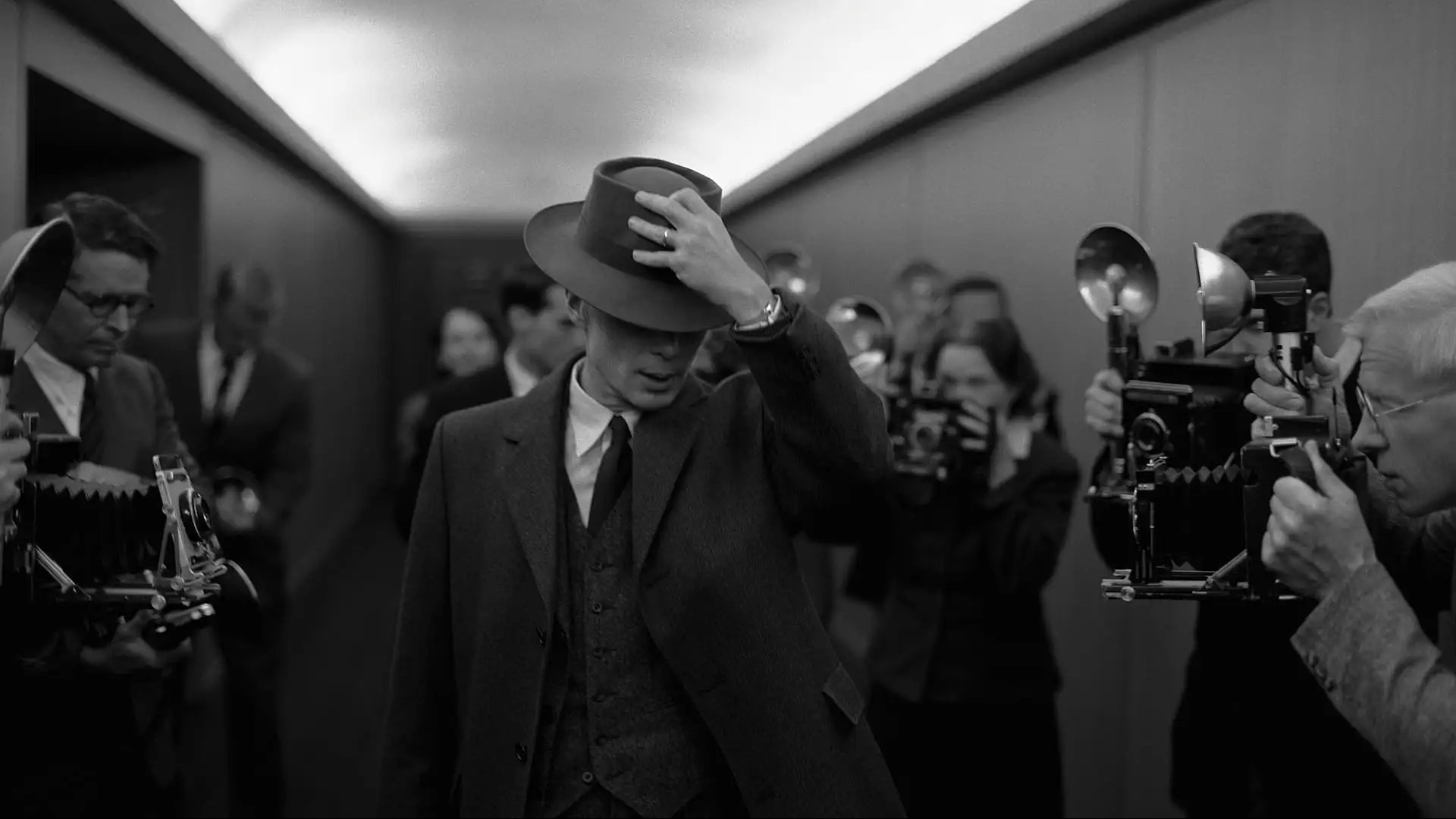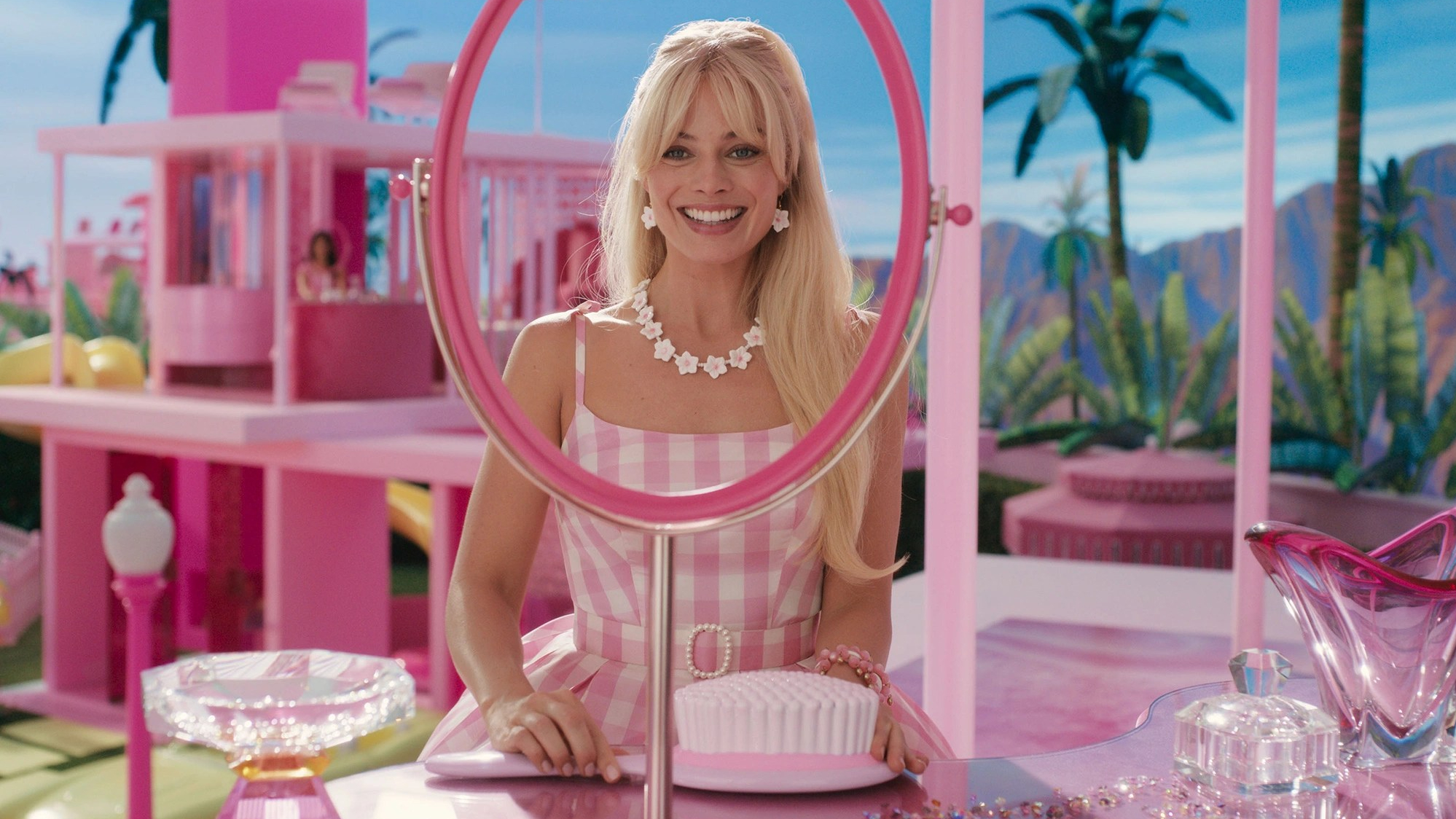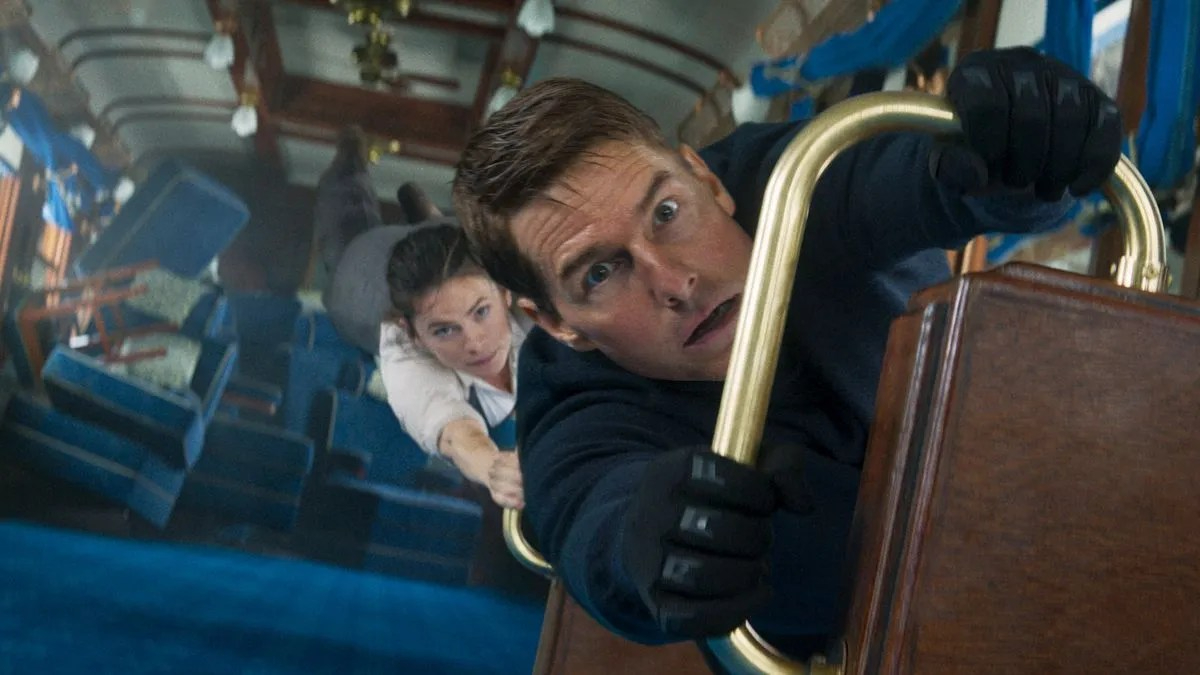OPPENHEIMER (2023)

“We knew the world would not be the same. A few people laughed, a few people cried, most people were silent. I remembered the line from the Hindu scripture, the Bhagavad-Gita. Vishnu is trying to persuade the Prince that he should do his duty and to impress him, takes on his multi-armed form and says, ‘Now, I am become Death, the destroyer of worlds’. I suppose we all thought that one way or another.” – J. Robert Oppenheimer, 1965.
The arrival of a new Christopher Nolan picture is always an event to look forward to, and rarely does the man disappoint. Even some of his rare misfires – The Dark Knight Rises (2012) being the first that springs to mind on account of it being riddled with plot holes and rife with conveniences and contrivances – are still more interesting and made with exceptionally more care than the majority of other mainstream releases. His last movie was the admirably silly, maximalist sci-fi espionage yarn Tenet (2020). Now, I seem to be in the minority in that I actually greatly enjoyed Tenet, but even I could see that it was a zealous indulgence of the director’s most egregious tendencies: it was cryptic, byzantine, overly earnest and the plot was basically Thunderball (1965) with time travel.
Three years later Nolan is back in serious territory with Oppenheimer, a tense and grandly executed thriller inspired by Kai Bird and Martin J. Sherman’s Pulitzer Prize–winning biography American Prometheus. Over the course of three-hours, Nolan’s chronicle of J. Robert Oppenheimer deftly weaves back-and-forth between several story threads that span four decades, some shot in colour and others in stark monochrome that recall Oliver Stone’s energetically edited cinematic jigsaws JFK (1991) and Nixon (1995). In one, Dr. Oppenheimer heads a team of the best and brightest minds at Los Alamos during the Second World War in a pulse-pounding race against the Nazis to develop the world’s first atomic weapon; in another we learn of how the great physicist was stripped of his security clearance; the third concerns the intriguing animosity between Oppenheimer and a Lewis Strauss, the chairman of the Atomic Energy Commission. Throughout the many layers, however, Oppenheimer is, at its heart, a heady, brooding tale that plumps the complexities and contradictories of an enigmatic man placed in an unenviable position, as he must risk the perilous moral conundrum of potentially destroying the world in order to save it.

Boasting a gifted ensemble with more names than one would find in the Screen Actor Guild directory and atmospheric yet intimate photography by Hoyte Van Hoytema, Oppenheimer is Mr. Nolan’s densest and most cerebral work since his breakout feature Memento (2000). In every sense, this is a film of staggering magnitude, bursting with characters, dialogue and timelines (à la 2017’s Dunkirk) but the huge spectacle – amplified by the gigantic IMAX screen – never overwhelms or devours. Indeed, there is something almost biblical about this film, an intensity that almost defies articulation. The notion that an outwardly unassuming, chain-smoking academic like Dr. Oppenheimer – played with steely aplomb by frequent Nolan muse Cillian Murphy – could engineer a device so powerful, so deadly is truly terrifying, and Oppenheimer revels in that sense of danger.
Given that Oppenheimer is a Nolan production, it goes without saying that this is a meticulously made movie. In a formal sense, this is near perfection, amalgamating the grandeur of a David Lean, the chilly intellectualism of a Stanley Kubrick, the straightforward, no-nonsense professional male camaraderie of a Howard Hawks film with a touch of the hallucinatory one would expect from the works of Roeg or Resnais. The direction, photography and editing is impeccable, as is Ludwig Göransson’s exceptional score which richly marries the orchestral with the electronic. Every scene is full of sweep and stateliness that recalls the masterful Lawrence of Arabia (1962) and Doctor Zhivago (1965). Watching Oppenheimer is akin to observing a painter at the peak of his powers, a maestro in full command of his craft, a general who earns respect from those around him not only by virtue of his rank and insignia but by the sheer professionalism with which he conducts his business. Oppenheimer showcases the director’s skill and style as a storyteller, combining the scale and spectacle of a prime Spielberg hit with the intellectual integrity and artistic adroitness usually reserved for the art-house circuit. His movies are big, beautiful, poetic and personal but never pretentious. Such a feat is exceptionally rare in contemporary cinema. The extraordinary thing is that Oppenheimer might be Nolan’s biggest and most beautiful film yet.
Whether it be the lorry flip on a public street in The Dark Knight (2008), the mind-melting rotating hotel hallway in Inception (2010), the hijacking of a plane during the opening of The Dark Knight Rises or the Boeing 747 crash in Tenet, Nolan is known for orchestrating memorably outlandish set-pieces. However, the pivotal set-piece in this movie – that being the detonation of Trinity – is surely his most jaw-dropping to date and ranks among the most mesmerising things I’ve seen achieved on the big screen, up there with 2001: A Space Odyssey (1968) and the awesome climax of Close Encounters of the Third Kind (1977). As to those who might find the meaty three-hour runtime daunting, fear not, for this, in spite of its length and the plethora of scholarly scenes with boffins in rooms spouting technobabble about quantum physics, never has a dull moment. For better or worse, while it is Nolan at his most verbose he leavens the heavy verbiage with some inspired visuals, ample moments of tension and the occasional touch of the expressionistic. When it’s all said and done, this is a very busy movie that barrels along at a rocket’s pace.

But while Nolan is irrefutably the confident puppet master, the nucleus that holds the film together in front of the lens is Cillian Murphy. As the broken, brooding architect of the instrument capable of untold wanton destruction and a naïve man haunted by the horror of his own invention, the magnetic Murphy, complete with wide-eyed, faraway stares and a husky, John Huston-like cadence, is simply outstanding. Watching him as his soul-piercing blue eyes blazed the screen, one could not help but be reminded of the sphinx-like Peter O’Toole in Lawrence. Murphy, whether he’s appearing in genre affairs like Nolan’s Batman trilogy, 28 Days Later (2002) or A Quiet Place Part II (2020) or smaller, introspective projects like Ken Loach’s Palme d’Or winning The Wind That Shakes the Barley (2006), has consistently displayed his ability to be a quietly captivating and chameleonic performer. And yet it is here in Oppenheimer that the versatile, introspective Murphy delivers a true career-best height worthy of all awards, recognition and plaudits. The comparisons between Oppenheimer with the mythical Prometheus, the misguided Titan of ancient Greek myth that defied the Gods by stealing fire from Olympus and giving it to the mortals, is about as subtle as a bomb going off (an apt analogy), but the more that unfolds the closer Oppenheimer starts to resemble a Faust or a Frankenstein. Like the field in which he specialises, Oppenheimer is a walking puzzle: he is a true polymath and polyglot, a far-thinking visionary yet infuriatingly myopic, sensitive yet arrogant, a scholar as well as a keen outdoorsman, a devoted family man and a louche, a flag waver for the downtrodden yet a man clothed in privilege. Nolan has a long history of placing tortured, work-obsessed male protagonists in the spotlight, but Robert Oppenheimer, as portrayed by Murphy, is indisputably the most fascinating, bedevilling character ever drawn in Nolan’s filmography with the exception of Heath Ledger’s iconic incarnation of the Joker, and Murphy deserves all the credit in the world.
Murphy’s A-list co-stars Matt Damon and Robert Downey Jr. provide supple support. The former is the obligatory and obstinate army general figure who often locks horns with the famed physicist; the frosty but mutually respectful relationship between the realms of science and the military have been seen many times before, the most notable that springs to mind being the many quarrelsome episodes between Andrew Keir and Julian Glover in Hammer’s adaptation of Nigel Kneale’s Quatermass and the Pit (1967). However, it is Robert Downey Jr. who, in a subdued but shrewdly striking part as businessman and philanthropist Lewis Strauss (pronounced “Straws”), astonishes the most. As Oppenheimer’s wily, obsessive and insecure nemesis, the visibly gaunt Downey Jr. is indelible and impeccable as the sleazy, serpentine ambitious government official. After ten years making the big bucks playing Iron Man in the MCU, it is legitimately refreshing to be reminded how charismatic an actor Downey Jr. can be when given the opportunity to spread his wings. The dogged rivalry between Murphy’s Oppenheimer and Downey Jr.’s Strauss is reminiscent of the dynamic between Valjean and Javert in Hugo’s Les Misérables, Mozart and Salieri in Amadeus (1984) or even the quarrelling magicians Nolan’s own The Prestige (2006); both men see the strengths and shortcomings in one another, and it makes for quite riveting viewing. The story of Oppenheimer and Strauss is a familiar one: that of how the envy and vindictiveness of small, insignificant men (in this case, Downey Jr.) can bring about the downfall of great, exceptionally gifted men like a Robert Oppenheimer.
The remaining star-studded roster of players all do their parts justice, whether they be Nolan regulars like the avuncular Kenneth Branagh or veteran thespian Tom Conti in his poignant, rueful role as Albert Einstein, or newcomers such as the terrific Emily Blunt as the iron-willed, sharp-tongued biologist and botanist wife of Oppenheimer. Florence Pugh, the only other major female character besides Blunt, is lamentably peripheral as Oppenheimer’s leftie lover, which is bitterly disappointing considering her elegant skill as an actress and the fact that she receives a deceptively high billing. Despite her short scenes, however, Pugh is nonetheless a transfixing screen presence to be reckoned with and her character, a fragile figure who befalls a tragic fate, is mightily impactful. Special mention should also go to the transformative Gary Oldman for his memorable cameo as President Harry S. Truman.

Nolan’s Oppenheimer is, to paraphrase the title character himself in the scene where he attempts to explain a tricky quantum mechanics concept to a Berkeley student, “a paradox, but it works”. Amidst a landscape wherein everything seems to be slavishly motivated by commerce with little regard for artistic flair, stitched together with rushed writing, lazy and lifeless performances and second-rate technical accoutrements, a singular, cleverly crafted picture such as this is something to cherish and never be taken for granted. Since The Dark Knight Trilogy, Nolan has been perfecting the art and process of making smart, finely-tuned blockbusters that demand the attention of the audience and can only be fully appreciated in the multiplex, free of distractions. In many ways, one gets the impression that Nolan’s whole trajectory has been leading to this. In the hands of another, this could have easily been a dry, dull, tedious exercise but through some adroit and ingenious craftsmanship this explosive epic has become a visceral, operatic mosaic of everything great about film and filmmaking and a true treasure for the thinking cinephile.
Intense, haunting and pensive, Oppenheimer remains a real rarity: a genre-bending, major studio-backed big-budget picture based on an interesting chapter in our history, full of spectacular, canvas-filling imagery, ingenious practical effects and clearly made with passion by a magisterial moviemaker at the top of his game. This, Top Gun: Maverick (2022) and Spielberg’s West Side Story (2021) are the sorts of movies I thought Hollywood was incapable of making these days.





